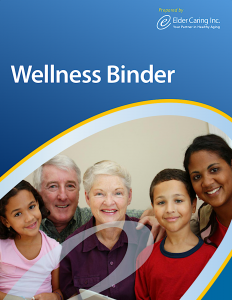Informed Risk: Whose Decision Is It Anyway?
Originally published in allaboutestates.ca May 8, 2013:
Part of my role as a Geriatric Care Manager is to determine if individuals can safely remain in their own homes, living by themselves. As I have previously discussed, most of us want to remain in our own homes for us long as possible. Our assessments review the safety and care needs that need to be addressed, in order to make this happen. As always this type of situation should be regularly reassessed.
When evaluating preferred living accommodation, safety and care needs are essential factors to be considered, along with choice and freedom. One recent scenario is the case of Mr. Victor . Mr. Victor is a 88 year old gentleman who has been living on his own since his wife died 12 years ago. Mr. Victor has two children who are in disagreement as to what is in their dad’s best interest as to where he should continue living. He had fallen a few weeks previously, fortunately he had not broken any bones but the fall, which occurred while he was going downstairs, at night, to get a drink of water, scared him and his children. Our firm was asked to assess Mr. Victor’s care needs and provide an opinion as to what he required and where his needs could best be met. Mr. Victor had been previously deemed not capable of managing either his own care or finances. Both children jointly held his POA for finance and personal care.
At this point in time, Mr. Victor was not managing meals, shopping, laundry or transportation on his own. He was independent in some activities of daily living, including: eating, dressing, and ambulating. While he had daily caregivers, he was still alone for a few hours every afternoon and overnight. Based on our assessment, it was determined that he was at risk of harm when not being supervised. While we were unable to quantify the risk, ie. identify the likelihood of risk or chance that something untoward will happen, the risk nonetheless existed.
While unknown, it is doubtful that Mr. Victor would be able to safely evacuate from the house if there was a fire; besides possibly not hearing the fire alarm, he may not be able to react quickly enough. While he did know that 911 was the appropriate number to call, it is still a potentially risky situation. As well, it is doubtful that he could determine if a person at his door was a friendly face or one that could cause him harm.
For those who are capable of managing their own care decisions, the issue of informed risk is commonplace. In these situations, one works to minimize the risks, although they may still exist. People who are competent make autonomous decisions about the risks they wish to take based on the magnitude and likelihood of expected harms and benefits associated with each course of action .
There are many seniors in the community living alone with dementia and for those who hold the POA for care- they are making the decision regarding how much supervision is provided. Many families can’t afford 24 hour care. However the POA should take all precautions to make sure that risk is reduced substantially, which may include bringing in supports, accessing day programs for respite etc which could delay a move to a retirement or long term care facility. While a balance needs to be struck, once the risk factor overrides the risk of being alone, the POA should look at ways to obtain more care or look at another safer living situation. Informed risk, a tricky situation.
-Audrey Miller




